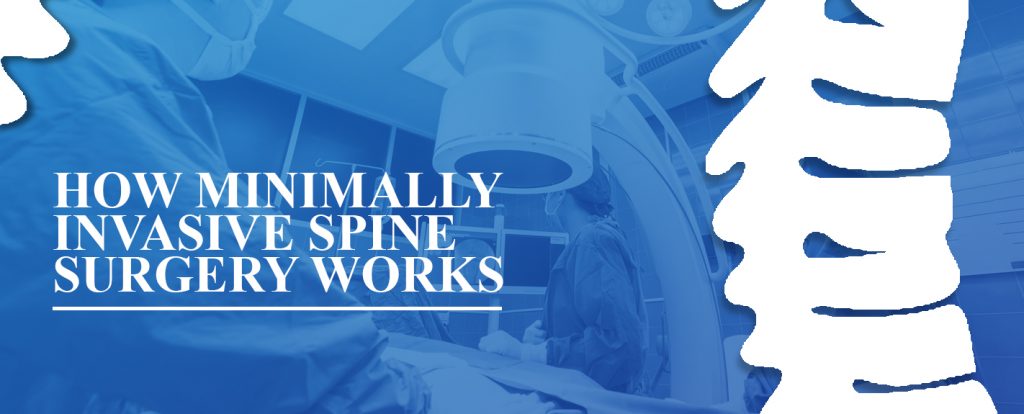If you’ve experienced back pain in your life, you may know what it feels like to need surgery. The majority of Americans have had back pain at some point in their lives, and about 30 million individuals seek professional help for a spine issue each year. Human beings have suffered back pain since the beginning of time, and historic records show they’ve been trying to heal back pain for thousands of years.
Spine surgeries throughout history were not as successful as they are today. However, after centuries of scientific advancement, medical professionals have gained a better understanding of how to perform minimally invasive procedures that lead to less discomfort, reduced recovery times and quality results. In this post, we’ll look at the history of spine surgery and how it has evolved over many years of trial and error.
Ancient Times
Ancient civilizations performed and studied orthopedic surgery, including back surgery. Back issues were not uncommon during ancient times. Many individuals suffered spinal fractures when they fell off of a horse or were a victim of a construction accident. In many cases, individuals with spine deformities needed treatment for back pain.
Although it’s likely spine injury treatment traces back much further, the first known references to spinal disorders begin with the Egyptians.
1. The Smith Papyrus
The first known references to spinal disorders trace back to ancient Egypt with the Smith Papyrus. The Smith Papyrus dates back to about 1650 B.C. The manuscripts include observations to determine the presence of a dislocated vertebra. According to this ancient text, a spinal fracture is related to loss of feeling in the legs and arms, or paralysis. This shows an early understanding of the connection between a spine fracture and neurological problems.
However, dating even further back is evidence of spinal surgery, found in Egyptian mummies from 3000 B.C.
2. Hippocrates
Hippocrates, born in 460 B.C., is often regarded as the father of medicine. He was a Greek physician who lived in Egypt for a long time. He gained knowledge about anatomy by studying the corpses of warriors who died in battle, and it’s likely he performed animal dissections to learn more.
His reports include cases of scoliosis, fractures, sciatic pain and dislocations of the vertebrae. He described spine deformities that are consistent with scoliosis. Hippocrates blamed spine distortions on poor posture and developed treatments involving contraptions known as the Hippocratic ladder and the Hippocratic board. These tools applied pressure to separate joint surfaces without injuring surrounding ligaments.
3. Galen
Galen was a famous physician and surgeon in the Roman Empire. He spent much of his life on a quest to figure out how the human body works. Around 200 A.D., Galen correctly described the spinal column as composed of 24 vertebrae, but he did not correctly identify spinal nerves.
Galen studied anatomy through animal experiments and his work as a physician for gladiators. His experiments confirmed Hippocrates’s observations regarding scoliosis, and he designed and tested jackets meant to modify scoliosis or curvature of the spine. However, because human dissection had been banned, many of his anatomical observations were inaccurate.
The First Spine Surgery
Spinal traction, which is a form of decompression therapy and relieves pressure on the spine, can be traced back to almost 3500 B.C. However, the laminectomy, which is the surgical removal of part of a vertebra to relieve pressure on the spinal cord or nerves, may be the first spinal surgery ever performed.
Paul of Aegina arguably performed the first laminectomy around 650 A.D. It is likely the procedure was used to treat spinal cord compression following a spinal injury. Despite Paul’s contributions to the medical community, it would not be until much later that surgeons describe a laminectomy again.
The 1800s
Members of the medical world advocated for the laminectomy procedure as early as the 16th century. However, it was not performed again until the early 1800s. Once surgeons embraced the procedure as treatment typically prescribed for trauma, infection or tumors, it became the only surgical spinal procedure for more than a hundred years until new technology and techniques developed during the 20th century.
The early cases of laminectomy in the 19th century usually did not go well. Severe complications were common, many laminectomy patients did not recover, and mortality rates were high. Due to many poor results, the medical community debated whether or not a laminectomy was an effective procedure. However, it is likely that a lack of modern anesthetic techniques, antibiotics and adequate pain medication contributed greatly to mortality rates, and early procedures and recoveries may have been more successful had modern medicines been on hand.
Nevertheless, there were some success stories relating to 19th-century spine surgery. For example, in 1829, Dr. Alban G. Smith performed a laminectomy on a man who fell off his horse in Kentucky. As a result, the patient regained some neurologic function. As surgeons gained more experience performing spine surgeries, the public grew to accept such procedures.
Then, in 1839, Jules Guerin was the first surgeon to attempt surgical correction in patients with scoliosis. However, his technique was far from perfect and eventually led to a lawsuit which ended his medical career in France. It would not be until the 20th century that scoliosis surgery would be used again.
One of the greatest advancements in the world of orthopedic surgery during the 19th century occurred when German physicist Wilhelm Roentgen invented the X-ray in 1885. X-rays gave the medical world an unparalleled view into the human skeletal system, which led to a better understanding of how the spine works, and how surgery can be used in treatment.
The Early 1900s
The early 1900s welcomed invasive surgery like no other time before. For example, in 1911, Russell Hibbs performed a fusion surgery to prevent further curvature of the spine for a patient with spinal tuberculosis. His success led him to treat other patients with spinal tuberculosis, and he used his experience to surgically treat patients with scoliosis. Hibbs is thought of as a pioneer in spinal fusion surgery.
In 1932, Mixter and Barr performed the first intentional discectomy. A discectomy is one of the most common techniques used in minimally invasive surgery today. It involves removing part or all of an intervertebral disc to relieve pressure on the spinal cord or nerve roots.
The Mid-1900s
During the mid-1900s, the laminectomy grew in popularity and surgeons began to use microscopes to perform surgery and explore spinal nerves. John McCulloch was one of the leaders in microsurgery. Before microsurgery, most laminectomy procedures involved a large incision, and surgeons typically wore small magnifiers. Dr. McCulloch introduced the idea of using anatomic segments during surgery.
As surgeons everywhere had a better understanding of human anatomy than doctors of the past, they were able to reduce trauma to soft tissues and remove the least amount of bone necessary to expose a herniated disc. As a result, incisions shrank and became more precise. Here are a few more pioneers in the field of minimally invasive surgery:
- 1973: Kambin and Savitz introduce the idea of endoscopic lumbar discectomy. An endoscope is a thin tube with a light and lens used to examine the interior of the body and to provide access to the surgical area.
- 1975: Hijikata is the first surgeon to remove a disc through a tube.
- 1977: Yasargil and others refine the use of microsurgical techniques. Also in 1977, the first magnetic resonance imaging (MRI) exam on a human patient is performed. Isidor Isaac Rabi is credited with developing the MRIs.
The 1990s to the 21st Century
Thanks to developments in MRI technology and endoscopic spine surgery, minimally invasive surgery was replacing open spine surgery and saving patients from the complications associated with less precise procedures. Soon, further technological improvements would give surgeons even more control in the operating room, and patients would enjoy greater surgery success.
The introduction of the laser opened new doors in the world of minimally invasive spine (MIS) surgery. In 1990, Kambin started using lasers to destroy disc fragments, but its use was limited and imprecise. Although laser surgery influenced modern day minimally invasive surgery, laser spine surgery is rarely used for conditions other than removing spinal cord tumors. It is true that lasers are an important surgical cutting tool, but they are not recommended for removing herniated disc material because they cannot be controlled as precisely as a scalpel.
During the 1990s, many surgeons performed MIS surgeries under microscopes. It was during the 1990s that Kevin Foley and Destandau independently developed the tubular retractor system to limit damage to soft tissue. In 1997, Dr. Anthony Yeung developed the most widely used endoscope system for spine surgery. His technique was also designed to minimize tissue disruption.
Throughout history, surgeons all over the world contributed their skills and knowledge to develop ways to perform spine surgery with the least amount of pain for the patient. Today, all kinds of techniques for spine surgery exist, and it is widely known that a less invasive technique has shorter initial recovery periods. Unlike the 1980s and 1990s when patients often stayed in the hospital for days after a routine surgical procedure, many spine surgeries are now performed on an outpatient basis.
Benefits of Minimally Invasive Surgery
Generally, MIS surgery aims to either stabilize the spine or relieve pressure affecting spinal nerves. Surgery may be used to treat conditions such as scoliosis, spinal tumors or herniated discs. Unlike open spine surgery, minimally invasive procedures are safer, faster and require less time to recover. MIS surgery reduces the risk of trauma to soft tissue and muscles compared to open spine surgery. As a result of MIS surgery, patients can expect:
- Smaller incisions and better cosmetic results
- Less blood loss
- No or little muscle cutting
- Reduced infection risk
- Reduced postoperative pain risk
- Less rehabilitation
- Faster recovery
In the past, surgeons made large incisions to move muscles out of the way and reach the spine. However, MIS surgery involves making a small incision and guiding instruments such as an endoscope into the incision.
How Minimally Invasive Spine Surgery Works
Although there are many techniques to minimize trauma during surgery, a common technique involves using a minimally invasive tubular retractor (MITR) which was first introduced in the 1990s. Surgeons might use a tubular retractor, along with an endoscope, to avoid needing to cut through muscle. A tubular retractor keeps muscles out of the way, and the surgeon can work through an incision without needing to expose a wide area. After the procedure, the tubular retractor is removed, and the muscles come back together. Sometimes surgeons approach the spine from the side of the body resulting in less pain because there is less muscle in the way.
Famous Spine Surgeries in History
Back pain is a common occurrence, and celebrities are not immune. Here are a few famous spine surgeries that changed the following patients’ lives:
- John F. Kennedy: As a result of injuries related to football playing and World War II, John F. Kennedy spent much of his life suffering back pain. In 1954, he underwent spine surgery which led to postoperative coma and septicemia. Kennedy had a total of five procedures and received care for the rest of his life. He wore a back brace as a president and often used crutches when he was not in the public view.
- Jennifer Grey: “Dirty Dancing” star Jennifer Grey was hospitalized in 2010 and underwent four neck surgeries. She had suffered back pain since 1987 when she was in a car accident, but her surgery in 2010 was a success.
- Peyton Manning: Quarterback Peyton Manning underwent multiple spine surgeries throughout his career. Fans wondered if he would keep playing after surgery he had in 2011. Nevertheless, he led the Broncos into the 2014 Super Bowl.
- Dwight Howard: Basketball star Dwight Howard underwent MIS surgery for a herniated disc in 2012. It prevented him from participating in the Olympics that year, but he was able to return to the National Basketball Association.
- George W. Bush: The former president George W. Bush underwent surgery for a disc problem and spent much of January 2013 recovering. It wasn’t reported until several months after the surgery.
Contact Spine INA Today
Human beings have always known that back pain can be debilitating. Fortunately, the work of dedicated physicians and surgeons has helped surgery evolve substantially over time. Now, many patients can undergo surgery quickly, successfully and with peace of mind.
If you experience regular back pain, spine specialists at the Spine INA are ready to help you live a pain-free life. Our team of physicians uses innovative endoscopic treatment techniques for the least invasive spinal procedures possible. It is our goal to relieve back pain for all of our patients quickly and with short recovery time. We treat a wide range of painful conditions, and we keep in touch with our patients to ensure they remain free of pain.
Some of our treatments include endoscopic spine procedures such as endoscopic discectomy and endoscopic rhizotomy to treat arthritis, sciatica, herniated disc, lower back pain and more. As leaders in the use of state-of-the-art techniques, we encourage you to reach out to us and start your journey towards a life free of back pain and discomfort. To learn more or to make an appointment, contact us today.
This content was medically reviewed by Baher Yanni, M.D, on January 3rd, 2019.
Resources:
https://link.springer.com/article/10.1007%2FBF03041182
https://www.webmd.com/back-pain/news/20141031/spinal-surgery-varies-by-region-in-us-study
https://www.healthline.com/health/spinal-traction#side-effects
https://www.uoanj.com/understanding-facts-myths-laser-spine-surgery/
https://www.ncbi.nlm.nih.gov/pmc/articles/PMC5594628/
https://www.ncbi.nlm.nih.gov/pubmed/12234425
https://spineina.com/endoscopic-rhizotomy/
https://spineina.com/endoscopic-spine-procedures/
https://www.turknorosirurji.org.tr/TNDData/Books/338/history-of-minimally-invasive-spine-surgery.pdf
https://www.turknorosirurji.org.tr/
https://www.ncbi.nlm.nih.gov/pmc/articles/PMC5107724/
https://www.beckersspine.com/spine/item/21710-10-of-the-most-famous-spine-surgeries-in-history.html
https://www.britannica.com/biography/Hippocrates
https://www.bbc.co.uk/history/historic_figures/galen.shtml
https://www.mayoclinic.org/tests-procedures/laminectomy/about/pac-20394533
https://www.whonamedit.com/doctor.cfm/1321.html
https://www.srs.org/professionals/conferences-and-meetings/the-hibbs-society
https://www.ncbi.nlm.nih.gov/pmc/articles/PMC4418987/
https://www.ncbi.nlm.nih.gov/pmc/articles/PMC3931158/
https://www.aps.org/publications/apsnews/200607/history.cfm














Leave a Reply